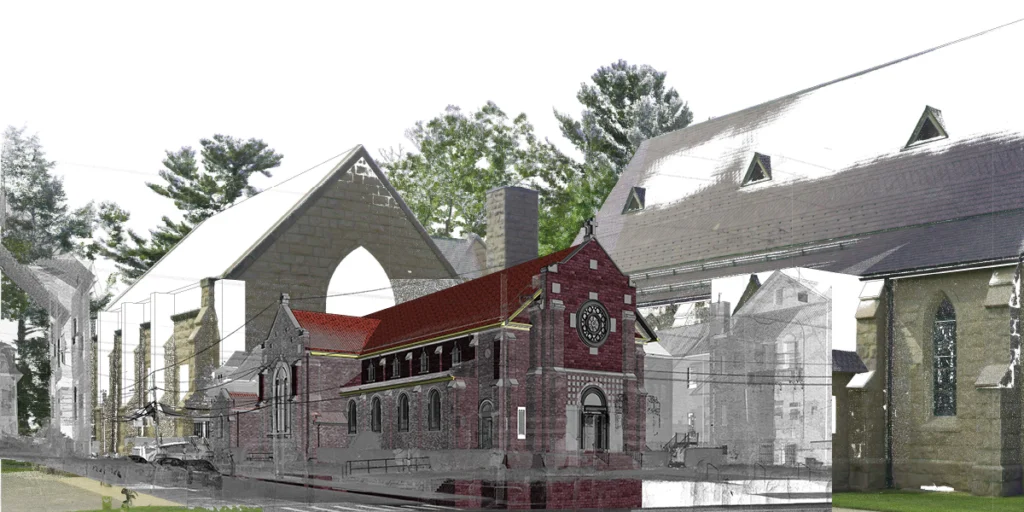Top Trends in Architectural Outsourcing Services
Published Date
Last Modified

Top Trends in Architectural Outsourcing Services
Architecture outsourcing services are now more specialized. This helps firms get expert help without keeping these skills in-house. One common area of outsourcing is architectural drawings and construction documents, where accuracy and following rules are very important. By working with specialized providers, firms can receive high-quality work that meets global standards.
Concentrating on specialization enables firms to fill any skill gaps they may have. It also allows them to tailor their efforts to meet the specific requirements of each project.
Understanding the Top Trends in Architectural Outsourcing Services can empower firms to make informed decisions in their outsourcing strategies.
Top Trends in Architectural Outsourcing Services
Architecture outsourcing services are now more specialized. This helps firms get expert help without keeping these skills in-house. One common area of outsourcing is architectural drawings and construction documents, where accuracy and following rules are very important. By working with specialized providers, firms can receive high-quality work that meets global standards.
Concentrating on specialization enables firms to fill any skill gaps they may have. It also allows them to tailor their efforts to meet the specific requirements of each project.
Understanding the Top Trends in Architectural Outsourcing Services can empower firms to make informed decisions in their outsourcing strategies.
Top Trends in Architectural Outsourcing Services – Exploring Key Insights
As we examine the leading trends in architectural outsourcing services, we must highlight their impact. These trends significantly enhance operational efficiency. They also contribute to improved project outcomes.
Outsourcing Architectural Drawings: Precision and Efficiency
Outsourcing Revit Architecture Modelling has become a norm for many firms seeking to streamline their workflows. This method enables architects to focus on their main creative work. Meanwhile, specialists manage the intricate details of technical drawings.
The precision and efficiency achieved through outsourcing not only improve project timelines but also enhance overall design quality.
This trend helps companies manage complex projects more easily. It ensures that every drawing meets industry standards and what clients expect.
Overall, the Top Trends in Architectural Outsourcing Services are reshaping how architectural firms operate, leading to increased collaboration.
By staying updated with the Top Trends in Architectural Outsourcing Services, companies can identify new opportunities quickly.
In addition, outsourcing architectural drawings can significantly reduce overhead costs associated with hiring and training in-house staff.
Hiring outside experts helps companies reduce the expenses of keeping a full-time team for technical drawings.
Understanding the Top Trends in Architectural Outsourcing Services allows project managers to foresee challenges and adapt accordingly.
This method is one of the Top Trends in Architectural Outsourcing Services, fostering collaboration and innovation in project management.
Access to advanced tools is another of the Top Trends in Architectural Outsourcing Services that benefits smaller firms.
This cost-effective approach enables the business to allocate resources more efficiently. As a result, funds can be directed toward other critical areas. These include marketing, client relations, and growth strategies.
Outsourcing Construction Drawings: A Strategic Advantage
Outsourcing Revit architecture modelling is a leading trend in architectural outsourcing services. This practice is essential for modern firms.
Outsourcing construction drawings is one of the Top Trends in Architectural Outsourcing Services. It provides a strategic advantage, especially for large-scale projects.
By considering the Top Trends in Architectural Outsourcing Services, firms can optimize their modelling processes effectively.
This adaptability reflects one of the Top Trends in Architectural Outsourcing Services that can enhance capacity.
When expert teams create detailed construction documents, they help project managers. This support ensures accuracy and consistency at every stage of the project.
This approach mitigates risks associated with errors and omissions, ultimately leading to smoother construction processes. Furthermore, it allows firms to maintain a leaner workforce, focusing their internal resources on strategic planning and design innovation.
Outsourcing construction drawings gives smaller firms access to the latest technology and software tools. These tools can be too expensive for them to buy on their own.
These tools enhance the accuracy and detail of construction documents, leading to fewer onsite errors and reduced project delays. By using the skills of outsourcing partners, firms can complete projects on time and within budget. This improves their reputation and increases client satisfaction.
Moreover, relying on the Top Trends in Architectural Outsourcing Services provides firms with superior project outcomes.
Effective project management is also reinforced by the Top Trends in Architectural Outsourcing Services, which streamline processes.
Embracing Outsourcing Revit Architecture Modeling
As technology advances, the top trends in architectural outsourcing services will keep evolving. This evolution will shape the future of the industry. As technology advances, the top trends in architectural outsourcing services will continue to change, influencing the industry’s future.
Utilizing these trends is crucial for firms aiming to leverage the benefits of architectural outsourcing.
Revit Architecture is among the Top Trends in Architectural Outsourcing Services. Building Information Modeling (BIM) has transformed the architecture, engineering, and construction (AEC) industry. Revit has become a top software for 3D design and modelling. The trend of outsourcing Revit architecture modelling is growing. Firms want to leverage this technology without the need to maintain an in-house team of specialists. By outsourcing Revit modelling tasks, firms can access cutting-edge capabilities while focusing on their core competencies.
The Benefits of Outsourcing Revit Architecture Modeling
Outsourcing Revit architecture modelling brings several benefits to architectural firms. First and foremost, it offers access to skilled professionals who excel at using Revit. They can create detailed and accurate 3D models. This expertise translates into improved design visualization, enabling stakeholders to better understand project concepts and make informed decisions. Furthermore, companies can take advantage of the scalability that outsourcing provides. This flexibility enables them to adjust swiftly to changing project scopes and deadlines.
Moreover, outsourcing Revit modelling allows firms to scale their operations efficiently. By leveraging external resources, firms can handle varying project demands without overextending their internal teams. This flexibility is particularly advantageous in a dynamic industry where project scopes can change rapidly. It also allows firms to take on more projects simultaneously, increasing their market share and competitive edge.
Furthermore, outsourcing Revit modelling often leads to improved collaboration across project teams. Collaborating with experts who understand the latest BIM technologies helps firms integrate design and construction processes smoothly. This collaboration fosters innovation, enhances project outcomes, and supports the delivery of high-quality architectural solutions.
In conclusion, the Top Trends in Architectural Outsourcing Services highlight the transformative impact of outsourcing in architecture.
Integrated Outsourcing Architectural Services
The shift towards integrated outsourcing architectural services is a trend that reflects the industry’s move towards holistic solutions. Firms are increasingly choosing comprehensive services instead of outsourcing individual project components. These services cover various aspects of design and construction. This integrated approach fosters seamless collaboration and communication among all stakeholders, leading to cohesive project outcomes. It also reduces administrative burdens, as firms can manage all outsourcing needs through a single provider.
Advantages of Integrated Outsourcing Services
Integrated outsourcing services offer numerous advantages, including improved coordination and reduced miscommunication. By using one service provider for different project parts, firms can ensure that all elements work together smoothly. This approach reduces the chances of discrepancies and conflicts. This streamlined approach enhances the overall efficiency of project delivery, leading to faster completion times and improved client satisfaction.
Additionally, integrated services typically offer improved project management features. This enables firms to have better control over timelines and budgets. This level of oversight is crucial in ensuring that projects are delivered on time and within financial constraints. Furthermore, integrated services allow firms to access a wider range of expertise. This access enables them to take on more complex and innovative projects.
Moreover, integrated outsourcing fosters stronger relationships between firms and their service providers. By collaborating closely with one provider, firms can better understand each other’s processes and expectations. This leads to more effective teamwork and problem-solving. This partnership approach can result in improved project outcomes and long-term success for both parties.
The Role of Technology in Architecture Outsourcing
Technology plays a pivotal role in the evolution of architecture outsourcing, enabling seamless collaboration and communication between firms and their outsourcing partners. Cloud-based platforms such as Autodesk BIM Collaborate Pro and advanced communication tools enable real-time information sharing. This ensures that all parties stay aligned and informed throughout the project lifecycle. These technological advancements are changing how architectural services are provided. This makes outsourcing a more effective option for firms of all sizes.
Leveraging BIM for Improved Collaboration
Building Information Modeling (BIM) serves as a cornerstone of modern architecture outsourcing, providing a comprehensive platform for collaboration. By integrating BIM into outsourcing workflows, firms can enhance coordination among architects, engineers, and contractors, resulting in more efficient project execution. BIM allows for real-time updates and changes. This capability helps teams respond quickly to modifications and keep the project moving forward.
BIM centralizes project data and offers visual insights into design concepts. This helps stakeholders spot potential issues early, reducing the chances of expensive rework. This proactive approach not only enhances project quality but also contributes to sustainable building practices by minimizing material waste. Furthermore, BIM promotes increased transparency and accountability. All project participants can access the same data, allowing them to track progress and performance metrics effectively.
Additionally, cloud-based BIM platforms allow teams to collaborate from any location worldwide. This breaks down geographical barriers and broadens the talent pool for firms. This global connectivity allows for the integration of diverse perspectives and expertise, enriching the design and construction process. As technology evolves, the role of BIM in architecture outsourcing is expected to grow. This growth will provide more opportunities for innovation and efficiency.
Future Prospects of Architecture Outsourcing
As architecture outsourcing continues to evolve, its prospects are promising. The ongoing advancements in technology are significant. They highlight the increasing demand for specialized skills. As a result, outsourcing will remain essential in the architecture, engineering, and construction (AEC) industry. Firms that embrace these trends and adjust their strategies will be well-positioned to benefit from outsourcing. As the industry becomes more connected, outsourcing will help firms access a broader range of skills and technologies. This will drive innovation and enhance competitiveness.
Adapting to Changing Industry Dynamics
To thrive in this evolving landscape, architectural firms must remain agile and open to change. This involves staying informed about emerging trends, investing in technology, and fostering strong partnerships with outsourcing providers. By doing so, firms can navigate industry challenges and seize opportunities for growth and innovation. Embracing a culture of continuous learning and adaptation is essential for staying competitive in the changing architectural field.
In conclusion, current trends in architecture outsourcing are transforming the industry. They provide firms with new methods to improve efficiency, lower costs, and access specialized expertise. By embracing specialized services, using technology, and adopting integrated approaches, architectural professionals can lead in this dynamic field. This strategy helps drive successful project outcomes in an ever-changing landscape. As the demand for sustainable and innovative solutions increases, outsourcing in architecture will become more important. This shift will lead to a more connected and efficient industry.


